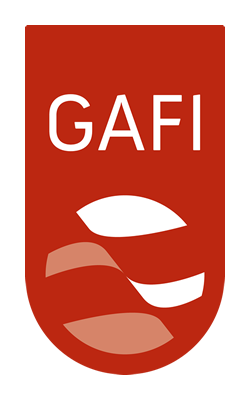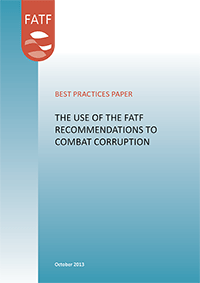Les Recommandations du GAFI visent le blanchiment de capitaux et le financement du terrorisme, mais elles sont aussi des outils puissants pour lutter contre la corruption. Lorsqu’elles sont mises en œuvre efficacement, les Recommandations du GAFI facilitent la détection, le dépistage et la confiscation des produits de la corruption. Bien qu’ils se renforcent mutuellement, les efforts en matière de LBC/FT et de lutte contre la corruption ne sont pas réunis efficacement. La Déclaration des Dirigeants du G20 du Sommet de St-Petersburg met en évidence que s'appuyer sur les mesures de LBC/FT pour lutter contre la corruption restera un secteur important de la coopération croissante entre les experts anti-corruption du G20 et du GAFI. Ce papier est une étape importante qui fournit des orientations et des meilleures pratiques aux décideurs politiques et aux praticiens sur l’utilisation des mesures de LBC/FT afin de lutter contre la corruption. [disponible en anglais uniquement]
--------------
AML/CFT experts and anti-corruption (AC) experts recognise that the FATF Recommendations can be a powerful tool in the fight against corruption. When effectively implemented, the FATF Recommendations create an environment where it is difficult for corruption to thrive and remain undetected.
Although AML/CFT and AC efforts are mutually reinforcing, they are not always brought together effectively. This is an issue of great importance to the international community, including the G20. The FATF has held three experts meetings, jointly with the G20 Anti-Corruption Working Group (ACWG), to provide an international platform for the exchange of views between AML/CFT and AC experts: President's Summary of Outcomes from the Expert's meeting on Corruption, 27 February 2011, President's Summary of Outcomes from the Experts’ meeting on Corruption, and President's Summary of Outcomes from the Experts’ Meeting on Corruption, 12 October 2013. Participating experts at these meetings agreed that there was a need for further tools to enhance the understanding of the FATF Recommendations and how they can be used in anti-corruption efforts.
This best practices paper aims to provide policy makers and practitioners with guidance and best practices on how AML/CFT measures can be used to combat corruption. The FATF developed this paper with direct input from the AC experts of the G20 ACWG, and built on existing work by the FATF:
- A Reference Guide and Information Note on the use of the FATF Recommendations to support the fight against Corruption (the Corruption Information Note)
The Corruption Information Note was published for the general public on how to leverage AML/CFT measures in the fight against corruption. (October 2012)
- Guidance on Politically Exposed Persons (Recommendations 12 and 22)
This guidance paper was developed to assist countries and the private sector in the development and implementation of measures to implement Recommendations 12 and 22 on PEPs. (June 2013)
- Specific Risk Factors in Laundering the Proceeds of Corruption: Assistance to Reporting Entities
This report provides assistance to financial institutions and designated non-financial businesses and profession (DNFBPs) to better analyse and understand the specific risk factors associated with laundering the proceeds of corruption. (June 2012)
- Laundering the Proceeds of Corruption
This report analyses typologies used to launder the proceeds of corruption through an analysis of cases from a practitioner’s perspective to assist in the understanding of money laundering techniques used. (July 2011)


 Twitter
Twitter
 Facebook
Facebook
 Instagram
Instagram
 Linkedin
Linkedin
